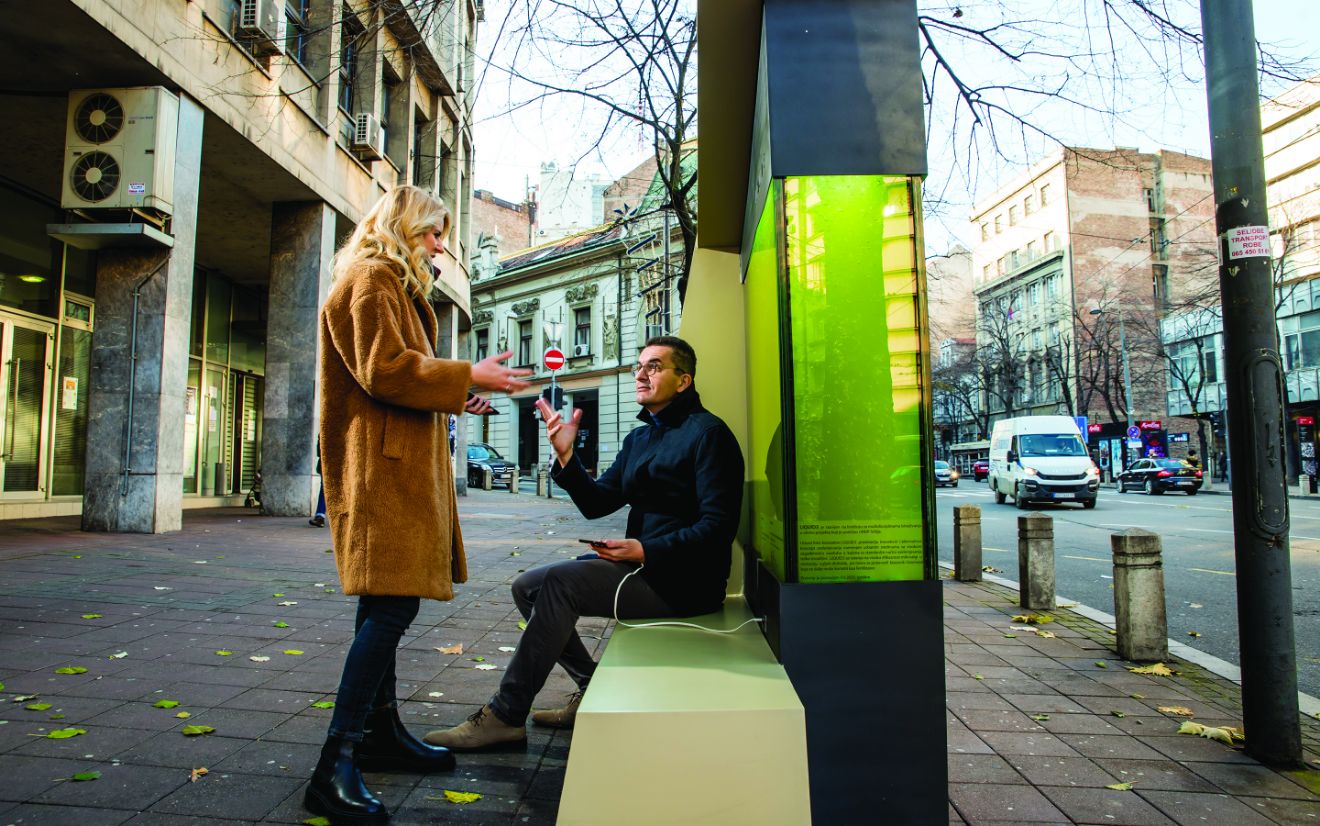Biome Makers improve soil health and agricultural productivity by integrating soil microbiome analysis and Artificial Intelligence.
Towering apartment blocks and huge industrial facilities stand as monuments to progress. The consequences, while not always visible, are anything but insignificant, as is the case of air pollution. While for some cities it is much simpler to implement measures to contain the problem, others find themselves facing more complex issues. An example of this is Belgrade, which joined the list of the top ten most polluted cities in the world in 2020, and in 2019 became the city in Europe with the highest number of deaths linked to pollution.
We interviewed Ivan Spasojević, who - along with his team at the Institute for Multidisciplinary Research at the University of Belgrade - has invented LIQUID3, a solution that challenges the traditional concept of urban trees.
LIQUID3 is a multifunctional structure that uses microalgae with high photosynthetic efficiency to capture CO2 and produce oxygen. The microalgae used are able to absorb 10 to 50 times more carbon than terrestrial plants. Furthermore, LIQUID3 eliminates particulate matter, helping to purify the air. A real artificial tree, fascinating and artfully designed, which doesn't just improve air quality, but also functions as urban decor, a bench, a solar charger for phones and a streetlamp at night.
The idea came about through a multidisciplinary approach at our institute. We were interested in the "Climate Smart Urban Development" challenge established by the United Nations programme for development - UNDP Serbia, the Green European Foundation and the Ministry for Environmental Protection of the Republic of Serbia. So, we created a group made up of biologists and an architect, with the goal of developing a solution for urban regeneration with the use of microalgae.
Its main strengths are its multifunctionality and its design. If we had developed a system focused on a single function, it wouldn't have been so useful to the community. It is essential that everything that needs to be used in the city is integrated into the urban fabric.
We believe that cities need to be a good place to live; they must offer a good quality of life and many opportunities for personal growth. However, this concept is endangered by the intense level of air pollution. Escaping from the city could absolutely be an individual solution, but it is not the most sustainable. We need to fight to improve the situation in our cities.

LIQUID3 can be applied in any urban area, including indoor spaces such as metro stations. We are currently creating another two units for other cities in Serbia. Obviously, a higher number of structures would be much easier to maintain from an economic point of view.
We had to address and resolve three main aspects: biological, technical and design. The first required us to find the optimal species of microalgae: robust and diverse, able to tolerate a wide range of temperatures and light levels, with a pleasant colour, and no odour. The technical aspects included construction, electrical installation with a solar power system, and easy access to materials for efficient maintenance. Finally, the design is an essential aspect for acceptance from the public: shape, colour and multifunctionality are the key to its success.
So far we haven't encountered any major obstacles. We have received great interest from hundreds of companies, cities and entrepreneurs. At the moment, we are working to establish a spin-off company. We are very satisfied with the impact LIQUID3 has had so far on the public and the media, prompting a discussion on nature-based solutions, environmental protection and alternative concepts for regeneration. We hope to generate more and more positive green vibes from now on!
Images Credits:
© LIQUID3
Biome Makers improve soil health and agricultural productivity by integrating soil microbiome analysis and Artificial Intelligence.
Big data, AI and adaptation strategies boost mountain conservation and resilience. Lifestyle and economy must go hand in hand with this transformation.
